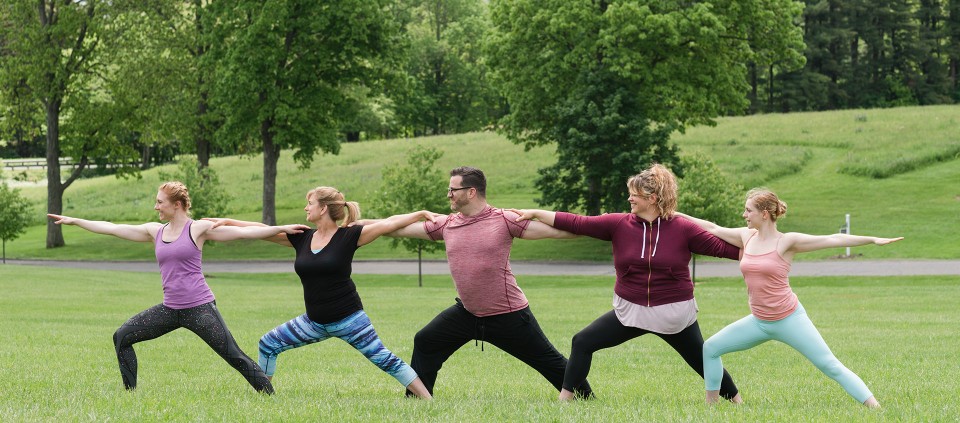Wired to Connect

The fittest may also be the gentlest, because survival often requires mutual help and cooperation.
—Theodosius Dobzhansky
We are inherently social beings, and our nature is to interact and form relationships with others. From the first moments of life, when we instinctively turn toward our mother’s face, to the end of life, we have an enduring need to be in attuned relationships with others. Polyvagal Theory describes autonomic safety as a “preamble to attachment.” Through co-regulation, a foundation of safety is created and attachment follows. Co-regulation creates a physiological platform of safety that supports a psychological story of security that then leads to social engagement. The autonomic nervous systems of two individuals find sanctuary in a co-created experience of connection.
The following sweet story a colleague shared with me beautifully illustrates the power of connection.
My 2-year-old daughter, Iris, has recently started coloring with markers. She’ll draw birds, fish, whales that all look like oblong circles with little faces but she knows what they are. One morning, she drew a whale and said to me, “The whale is sad.” I asked her what she thought the whale needed to feel better, and she said, “She needs another whale to look at her.” And then she asked me to draw another whale looking at her whale. I asked her how the sad whale was feeling now, and she said, “She’s feeling better.” I couldn’t help but be amazed at our intuitive wisdom as human beings, knowing that we are wired to seek safety in the presence of another. Since then, Iris has drawn many animals that need another animal to look at them and we have talked in a 2-year-old way about how it helps us feel okay if we can see another person’s loving face and how we can offer that sense of safety to others when they are feeling sad or lonely or hurt.
Co-regulation is at the heart of positive relationships: work alliances, enduring friendships, intimate partnerships. If we miss opportunities to co-regulate in childhood, we feel that loss in our adult relationships. Trauma, either in experiences of commission (acts of harm) or omission (absence of care), makes co-regulation dangerous and interrupts the development of our co-regulatory skills. Out of necessity, the autonomic nervous system is shaped to independently regulate. Clients will often say that they needed connection but there was no one in their life who was safe, so after a while they stopped looking. Through a polyvagal perspective, we know that although they stopped explicitly looking and found ways to navigate on their own, their autonomic nervous system never stopped needing, and longing for, co-regulation.
When opportunities for connection are missing, we carry the distress in our nervous system. Our loneliness brings us pain. Lonely people suffer from health and mental health problems including compromised immune function, heart disease, and depression—all issues related to autonomic function. While feeling lonely sometimes prompts us to reach out, loneliness also increases our watchfulness for threat with increased cortisol and activation of the sympathetic nervous system. A lonely person feels not only unhappy but also unsafe. Loneliness triggers a neuroception of unsafety, activating our autonomic defense systems. Chronic loneliness sends a persistent message of danger, and our autonomic nervous system remains locked in survival mode.
Polyvagal Theory shows us that co-regulation is a requirement for feeling safe, that our physiology is regulated in connection to one another. Co-regulating connections invite a sense of belonging and feeling safely tethered in the world. We suffer when our biological need for connection is unmet, and our suffering leads to autonomic responses. This could be the sympathetic nervous system reaching out through mobilization (interrupting, arguing, fighting for attention) or the dorsal vagal system surrendering in a strategy of shutdown (silence, distancing, isolating). What are some of the autonomic survival strategies you see in your clients when they are feeling alone and out of attunement?
For many people, co-regulation is a missing experience in their lives. For clients with experiences of childhood trauma, not belonging is a common belief, and feeling alone is a familiar autonomic experience. The therapy hour may be the one time in their week when co-regulation is possible. Therapists have a responsibility to regulate their own autonomic state and bring a reliable flow of ventral vagal energy to the session. An essential part of the therapy process is reaching out and offering cues of safety to clients, inviting them into the safety of ventral vagal connection. When two autonomic nervous systems begin co-regulating in ventral vagal connection, they form a feedback loop that creates an upward spiral of increasing vagal tone. For clients, these experiences begin to build new autonomic patterns, and the new patterns bring the beginnings of a new story.
Find out about upcoming programs with Deb Dana at Kripalu.
Excerpted with permission from The Polyvagal Theory in Therapy: Engaging the Rhythm of Regulation, © 2018, by Deb Dana.
Deb Dana, LCSW, is a clinician, consultant, and author specializing in using the lens of Polyvagal Theory to resolve the impact of trauma. She is the developer of the Rhythm of Regulation training series and a founding member of the Polyvagal Institute.
Full Bio and Programs